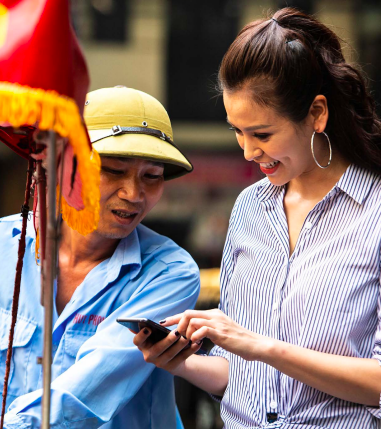Empowering the Blind or Visually Impaired Community in China

Originally published in Qualcomm's 2019 Corporate Responsibility Report
Imagine being blind or visually impaired (BVI) and being unable to access information that would help you navigate to a bus stop or read the expiration date on a milk carton. This would affect your ability to live independently and complete everyday tasks.
An estimated 12 million people in China are BVI. While information technology products exist to help BVI people overcome navigation and information recognition challenges, these products do not meet the unique needs of China’s BVI community. Many information recognition solutions are not accurate, easy to use or accessible. Additionally, BVI have limited options for accessing new information regarding social, cultural or professional development.
Wireless Reach, in collaboration with BSR, Beijing Baoyi Interaction Scientific and Technological Company and China Academy of Information and Communication Technology, developed the See4me program to address the most pressing needs of China’s BVI population — information recognition and navigation.
The heart of this program is a free mobile application combined with remote, manual assistance from volunteers to help BVI people overcome challenges. For example, the See4me app’s audio-visual and picture/text message support functions enable BVI users to communicate with volunteers remotely and get voice-guided assistance with difficult-to-see information, such as instructions on a medicine bottle or a CAPTCHA online verification code.
To enhance mobility, volunteers can vocally provide step-bystep navigation in public spaces. BVI users who must navigate in a complicated external environment, such as going to the hospital or catching a train, can pre-arrange for a volunteer to accompany them.
See4me has made an impact:
- More than 14,000 BVI and volunteer users registered to use the See4me mobile app.
- Volunteers responded to approximately 1,800 audio/visual support requests.
- Volunteers responded to nearly 3,000 picture/text support requests.

